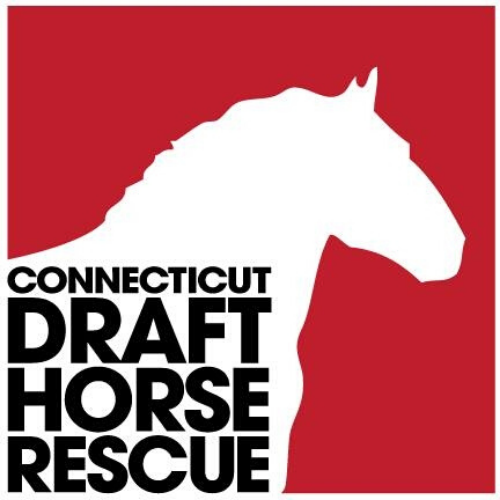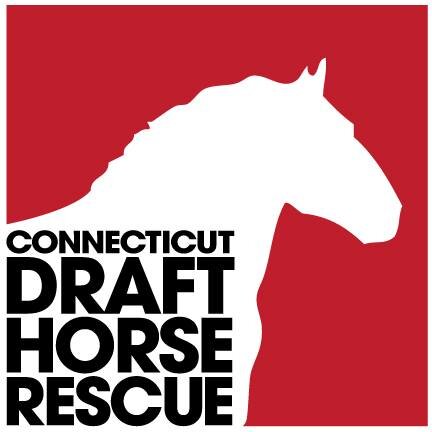Two of our youngsters, Baby Mac and Max, need your support.
As a rescue run by an equine veterinarian, we are grateful that we often have the resources to help horses that others cannot. There are limits to what Doc can do on the farm, especially with surgical cases, but having personal relationships with some wonderful vets at referral hospitals, along with incredibly generous and compassionate supporters, we can tackle almost any challenge we may face.
Baby Mac came to us when the rescue that raised him reached out to find him the help he needed which they could not provide. He’s a 4 year old Clydesdale stallion who suffers from a condition in both his hocks (OCD) where fragments of cartilage have separated from the bone. Their presence in the joints causes him pain and will lead to debilitating arthritis if not removed. At this young age, it’s critical that this be done soon before more damage is done. He also will need to be gelded so he can live peacefully with other horses when he’s ready to find his forever home.
Max is a 2 year old Percheron gelding who came to us in early June. His breeders were concerned that with his physical deformities, he was at risk of landing in the wrong hands. Hoping for a better future for him, they sent him for training but it was soon obvious that Max needed more help than that. When Max arrived, this sweet goofy boy, who was already close to 18 hands and just starting to turn gray, seemed to be in that awkward adolescent stage with gangly legs that he was just learning to sort out. He has dropped fetlocks on his hind legs and a large pocket of fluid on the point of one hock. He was still a stallion, so he needed to be gelded not just for his future but also to prevent perpetuating this conformation that may be a genetic defect. We gelded him on our farm, but anesthesia recovery was our first strong clue that something wasn’t right. He struggled to get up for what felt like an eternity, much longer than what is normal, getting into a dog-sitting position but not having the strength in his back end to stand. As we were considering using our backhoe to assist him with a sling, we were finally able to get him standing. Ok, we thought, his back end is weak from disuse and needs muscle development. Caring for his gelding incision included an exercise program which we hoped would help. That was a whole other challenge! You would expect a 2 year old to have boundless energy but exercising Max was like pushing a rope uphill. Trotting was a speed we rarely achieved and even walking him required multiple people to get any momentum. He occasionally stumbled but wasn’t picking his feet up so was he clumsy or unaware of where they were? Another clue something isn’t right? The next clue completely shifted Doc’s thinking: Max was leaning over a fence to grab some grass on the other side. When a volunteer gently asked Max to stop stretching out our vinyl fences, he lifted his head but as he did, he suddenly lifted it up high with an unusual backwards stagger. Doc took some xrays of his neck to look for signs of Cervical Vertebral Malformation (CVM), commonly known as Wobbler Syndrome. This condition is caused by a malformation or instability in the spinal canal in the neck which can result in signs like incoordination and weakness as it compresses nerves. It’s more common in larger male horses with rapid growth and long necks. Max fits every criterion. The xrays showed possible compression but obtaining images with a larger xray system in a hospital would be more useful. There are also additional diagnostic tests if these are inconclusive. This problem can often be corrected with surgery, but that decision would made with careful consideration of his other conditions and expert consultations to be sure it’s the correct path to take for Max.
The estimated costs for all this care are high; $10,000 is expected to cover Baby Mac’s surgeries and aftercare as well as Max’s evaluation, blood tests and xrays. We know that some will disagree with spending so much money for just 2 horses, and “how many more can be saved with that money”, but CDHR has always been about quality over quantity. We do the very best we can for the lucky few in our care, and treat them as our own to get them ready for a forever home. Even with conditions we can’t cure, we aim to have as much information as possible to match them with appropriate adopters and to give them the best quality of life we can until it’s their time to leave us. We believe every horse deserves a chance but we could never succeed in our mission without the incredible support we receive from our volunteers, our community and our donors. If you feel the same way, please help. No donation is too small and if you can’t donate, please share this story to help these 2 sweet and deserving young boys!

Baby Mac, such a goofball!

The beautiful Baby Mac

Baby Mac looking forward to a new day...

Max, towering into the sky

Our sweet Max turning silver!

Max having a tough time

